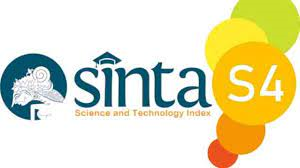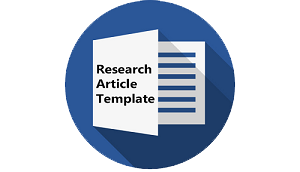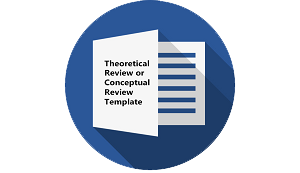Syntactic Object Representation of Amharic Sentences by Function
DOI:
https://doi.org/10.30957/ijoltl.v5i2.619Keywords:
Labeling Algorithm, sentence, syntactic object, {XP, YP}Abstract
The aim of this study was to portray the Syntactic Object representation of Amharic sentences by function. Qualitative data were gathered from thirteen native speakers of Awgni (six females, seven males). Relevant data were also collected as of secondary sources. All the way through purposive sampling, 25 sentences were selected for descriptive analysis. The method of data analysis used was Labeling Algorithm {XP, YP}. This Algorism is problematic; in order to resolve {XP, YP} difficulty projection, Syntactic Object was modified (by raising XP) so that there was one visible verbal head. Result indicated that each sentence structures share Syntactic Object representations that include Tense Phrases (TPs), Noun Phrases (NPs), Verb Phrases (VPs), Prepositional phrases (PPs), Adverb Phrases (ADVPs), Determiner Phrase (DPs) and Adjectival Phrases (APs). Finally, the study puts forward a further research on how labeling Algorithm {XP, H} and {X, Y} works to describe the label of every Syntactic Object representations found within sentence structures in Amharic.
Downloads
References
Baye, Yimam. (1987). Amharic Grammar. Addis Ababa: E.M.P.D.A.
Bayer, Josef and Obenauer Hans-Georg. (2011). Discourse particles, clause structure, and question types. Linguist. Rev. 28:449–91.
Chomsky, Noam. (2013). Problems of Projection. Lingua 130: 33-49.
Chomsky, Noam. (2013a). Notes on Denotation and Denoting. In Caponigro, Cecchetto, C (eds.) From Grammar to Meaning and I: The Spontaneous Logicality of Language. Cam¬bridge: Cambridge University Press, pp. 38–46. DOI: http://dx.doi.org/10.1017/ CBO9781 139519328.004
Chomsky, Noam. (2013b). Problems of Projection. Lingua 130: 33–49. DOI: http://dx.doi. org/10.1016/j.lingua.2012.12.003
Chomsky, N. (2014). Problems of Projection: Extensions. Ms.
Chomsky, Noam. (2014a). Problems of Projection: Extensions. Ms., MIT.
Chomsky, Noam. (2014b). Lectures on syntax at MIT. http://whamit.mit.edu/2014/06/03/recent-linguistics-talks-by-chomsky/
Chomsky, Noam. (2015). Problems of projection: Extensions. In Elisa Di Domenico, Cornelia Hamann & Simona Matteini (eds.), Structures, strategies and beyond – studies in honour of Adriana Belletti, 3–16. Amsterdam & Philadelphia: John Benjamins.
Cinque, Guglielmo. (2005). Deriving Greenberg’s Universal 20 and its exceptions. Linguistic Inquiry, 36:315–332.
Hartman, Jeremy. (2011). The semantic uniformity of traces: Evidence from ellipsis parallelism. Linguistic Inquiry 42(3):367–388.
Gasser, Michael. (2011). HornMorpho: a system for morphological processing of Amharic, Oromo, and Tigrinya. Conference on Human Language Technology for Development, Alexandria, Egypt.
Getahun, Amare. (1990). Modern Amharic Grammar: in simple approach. Addis Ababa: trade printing house.
Lechner, Winfried. (2006). An interpretive effect of head movement. In Mara Frascarelli (ed.), Phases of Interpretation, 45–71. Mouton de Gruyter.
Leu, Thomas. (2014). The Architecture of Determiners. Oxford University Press, New York.
Marantz, Alec. (2013). Verbal argument structure: events and participants. Lingua 130:152–68
Narita, Hiroki .(2015). Proceedings of the 32nd West Coast Conference on Formal Linguistics, ed. Ulrike Steindl et al., 286-295. Somerville, MA: Cascadilla Proceedings Project.
Rizzi, Luigi. (2016). Labeling, maximality and the head – phrase Distinction. The Linguistic Review, 33(1): 103–127
Roberts, Ian .(2010). Agreement and Head Movement: Clitics, Incorpo¬ration, and Defective Goals. Cambridge, MA: MIT Press.
Shlonsky, Ur & Luigi Rizzi. (2015). Criterial Freezing in small clauses and copular constructions in Italian and Hebrew. Ms., University of Geneva, University of Siena.
Downloads
Published
How to Cite
Issue
Section
License
Authors who publish with this journal agree to the following terms:
- Authors retain copyright and grant the journal right of first publication with the work simultaneously licensed under a Creative Commons Attribution-ShareAlike 4.0 International License that allows others to share the work with an acknowledgement of the work's authorship and initial publication in this journal.
- Authors are able to enter into separate, additional contractual arrangements for the non-exclusive distribution of the journal's published version of the work (e.g., post it to an institutional repository or publish it in a book), with an acknowledgement of its initial publication in this journal.
- Authors are permitted and encouraged to post their work online (e.g., in institutional repositories or on their website) prior to and during the submission process, as it can lead to productive exchanges, as well as earlier and greater citation of published work (See The Effect of Open Access).












